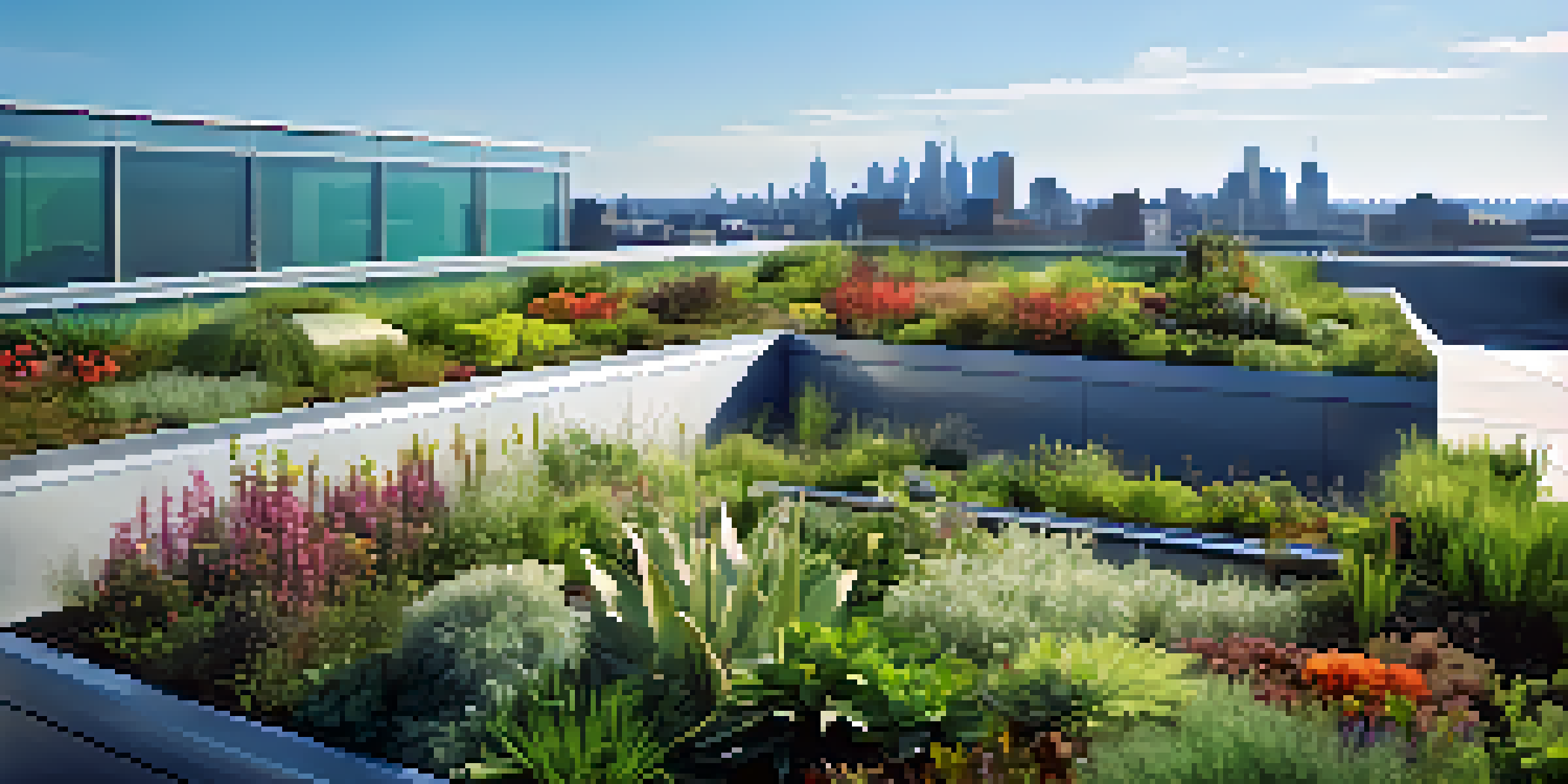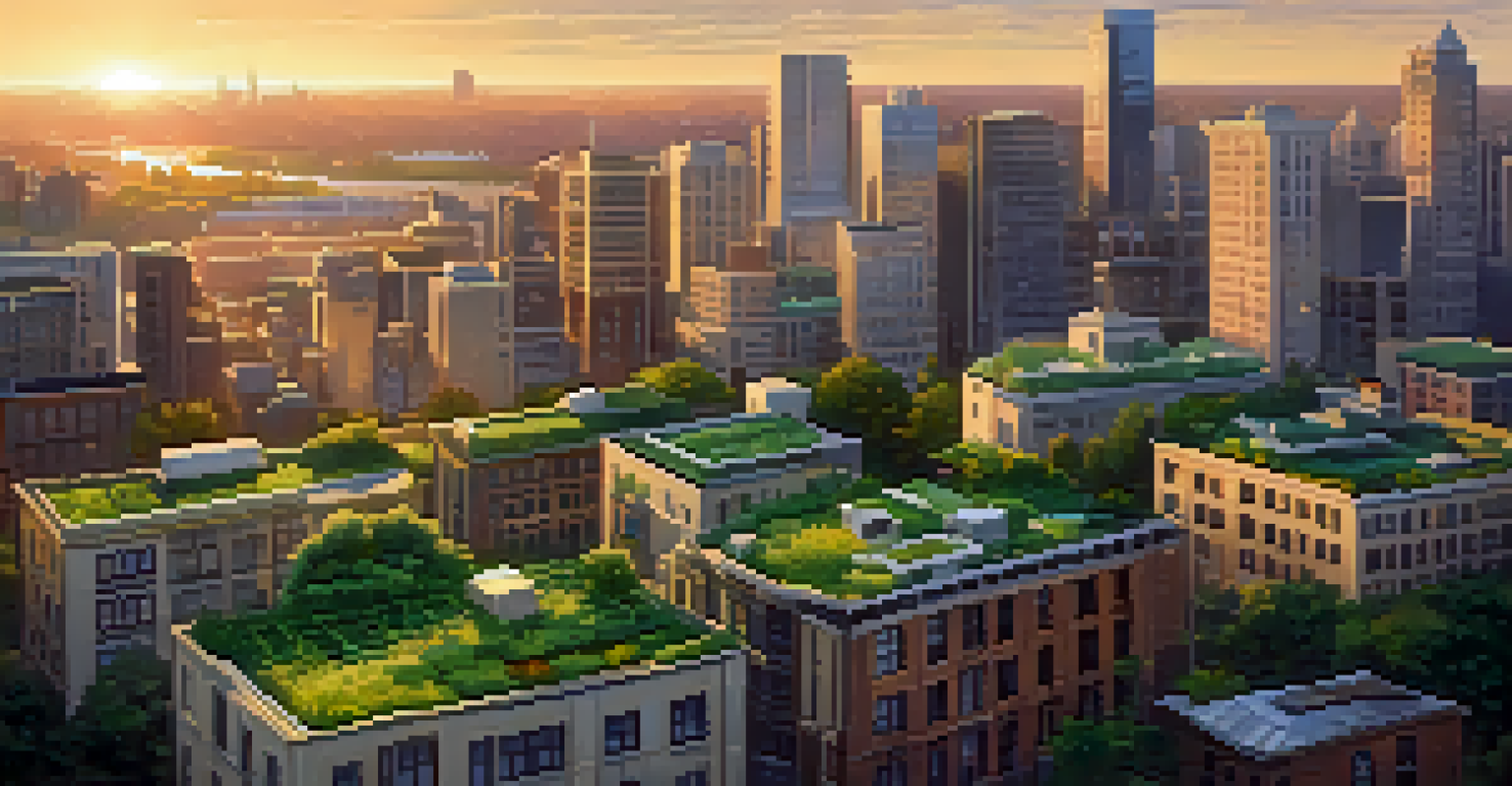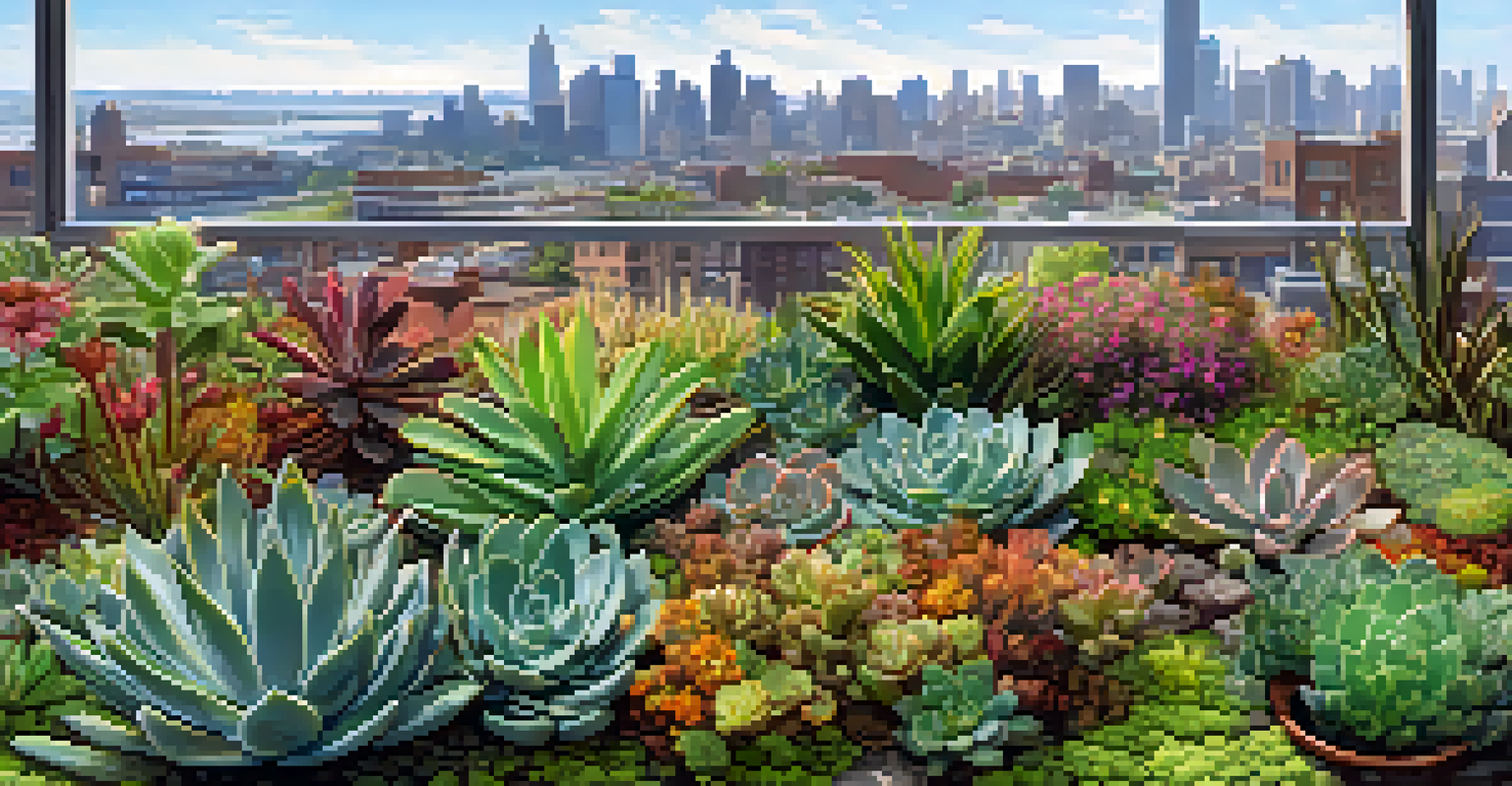Exploring the Cost-Effectiveness of Green Roof Systems

Understanding Green Roof Systems and Their Benefits
Green roof systems are essentially living roofs, covered with vegetation. These systems offer numerous benefits, from improved energy efficiency to enhanced urban biodiversity. By incorporating plants, they not only help in cooling buildings but also improve air quality, making cities more livable.
Green roofs are not just a trend; they are a sustainable solution that can transform our urban landscapes into healthier, more livable spaces.
Moreover, green roofs can reduce stormwater runoff, which is a significant issue in urban areas. When it rains, these roofs absorb a substantial amount of water, lessening the burden on drainage systems. This feature is particularly valuable in places that experience heavy rainfall or have poor drainage infrastructure.
In addition to environmental benefits, green roofs also provide aesthetic appeal. They create beautiful spaces that can be used for relaxation or recreation, transforming ordinary rooftops into vibrant gardens. This added value boosts property appeal, attracting potential buyers or tenants.
Evaluating Initial Installation Costs of Green Roofs
One of the first considerations when exploring green roofs is the initial installation cost. Generally, these systems can be more expensive to install than traditional roofing options due to the need for specialized materials and labor. However, it’s crucial to view this as a long-term investment rather than just an upfront expense.

For instance, while the cost of installation might be higher, green roofs can significantly lower energy bills by providing natural insulation. This can lead to substantial savings over time, making them a financially sound choice in the long run. An analysis of energy savings can often reveal that these roofs pay for themselves within a few years.
Green Roofs Boost Energy Efficiency
These living roofs can lower energy costs by up to 25% through improved insulation.
Furthermore, many governments offer incentives or rebates for green roof installations, which can alleviate some of the initial financial burden. These financial aids can make the transition to a green roof more accessible and appealing to property owners.
Long-Term Savings: Maintenance and Energy Efficiency
One of the most compelling arguments for green roofs is their potential for long-term savings. While maintenance is necessary, studies show that these roofs can lower energy costs by up to 25%. This efficiency is achieved through improved insulation, reducing the need for heating in winter and cooling in summer.
Investing in green roofs is investing in our environment, our economy, and our future.
Additionally, green roofs can extend the lifespan of a building's roof structure. The vegetation and soil layer protect the roofing material from UV rays and extreme temperature fluctuations, which can lead to costly repairs or replacements. This added durability means fewer expenses over the lifespan of the roof.
Moreover, the maintenance costs associated with green roofs are often less than anticipated. With proper planning, such as selecting low-maintenance plant species, property owners can enjoy the benefits without a heavy burden of upkeep, further enhancing cost-effectiveness.
Environmental Benefits Contributing to Cost-Effectiveness
Beyond direct financial savings, green roofs provide significant environmental benefits that can translate into economic advantages. For example, they contribute to urban cooling, which can reduce the heat island effect in cities, leading to lower energy consumption across the board. This collective reduction can ease the strain on municipal power resources.
Additionally, by absorbing rainwater, green roofs help mitigate the risk of flooding and reduce the need for expensive stormwater management systems. This can result in considerable savings for city budgets, which can be redirected to other pressing community needs.
Financial Incentives for Installation
Many governments offer incentives that help reduce the initial costs of green roof installations.
Furthermore, enhancing biodiversity in urban settings through green roofs can improve local ecosystems. This biodiversity can support pollinators and other wildlife, contributing to a healthier environment. A thriving ecosystem can also enhance property values, creating a win-win situation for both property owners and the community.
Case Studies: Successful Green Roof Implementations
Several cities have successfully integrated green roofs into their urban planning, showcasing their cost-effectiveness. For instance, Chicago has become a leader in green roofing, with thousands of square feet installed. The city has reported significant reductions in energy use and stormwater runoff, proving the financial and environmental benefits.
Another example is the Brooklyn Grange in New York City, which operates large-scale green roofs. By growing produce on rooftops, they not only promote local agriculture but also save on transportation costs and reduce carbon footprints, illustrating how green roofs can generate additional revenue streams.
These case studies demonstrate that green roofs are not just a passing trend but a viable solution that can lead to substantial savings and improved urban environments. By learning from these examples, other cities can implement similar strategies, enhancing the cost-effectiveness of green roofs.
Challenges: Addressing Common Concerns About Costs
Despite their many advantages, there are challenges and misconceptions regarding the costs of green roofs. One common concern is the fear of ongoing maintenance expenses, which can deter property owners. However, with careful planning and the selection of appropriate plant species, maintenance can be minimal and manageable.
Furthermore, some property owners may underestimate the potential savings on energy bills. It's essential for them to conduct a thorough analysis of their specific building and climate conditions to fully understand the cost benefits. This personalized approach can often reveal substantial financial incentives.
Environmental Benefits Save Money
Green roofs reduce stormwater runoff, mitigating flooding risks and lowering municipal management costs.
Lastly, the upfront investment can be intimidating. However, understanding the long-term financial implications and the availability of financial incentives can help in making a more informed decision. With proper education and resources, property owners can better appreciate the true cost-effectiveness of green roofs.
The Future of Green Roof Systems in Urban Development
As cities continue to grow, the importance of sustainable building practices becomes increasingly clear. Green roofs represent a forward-thinking approach to urban development, combining environmental responsibility with economic benefits. This trend is likely to gain momentum as more studies highlight their cost-effectiveness.
Moreover, advancements in technology are making green roof installations more accessible and efficient. Innovations in materials and design can reduce installation costs and enhance performance, making green roofs an even more attractive option for builders and developers.

In conclusion, as awareness of the benefits of green roofs spreads, we can expect to see them integrated into more urban landscapes. Their ability to provide aesthetic appeal, environmental benefits, and long-term cost savings positions them as a pivotal element in the future of sustainable urban development.